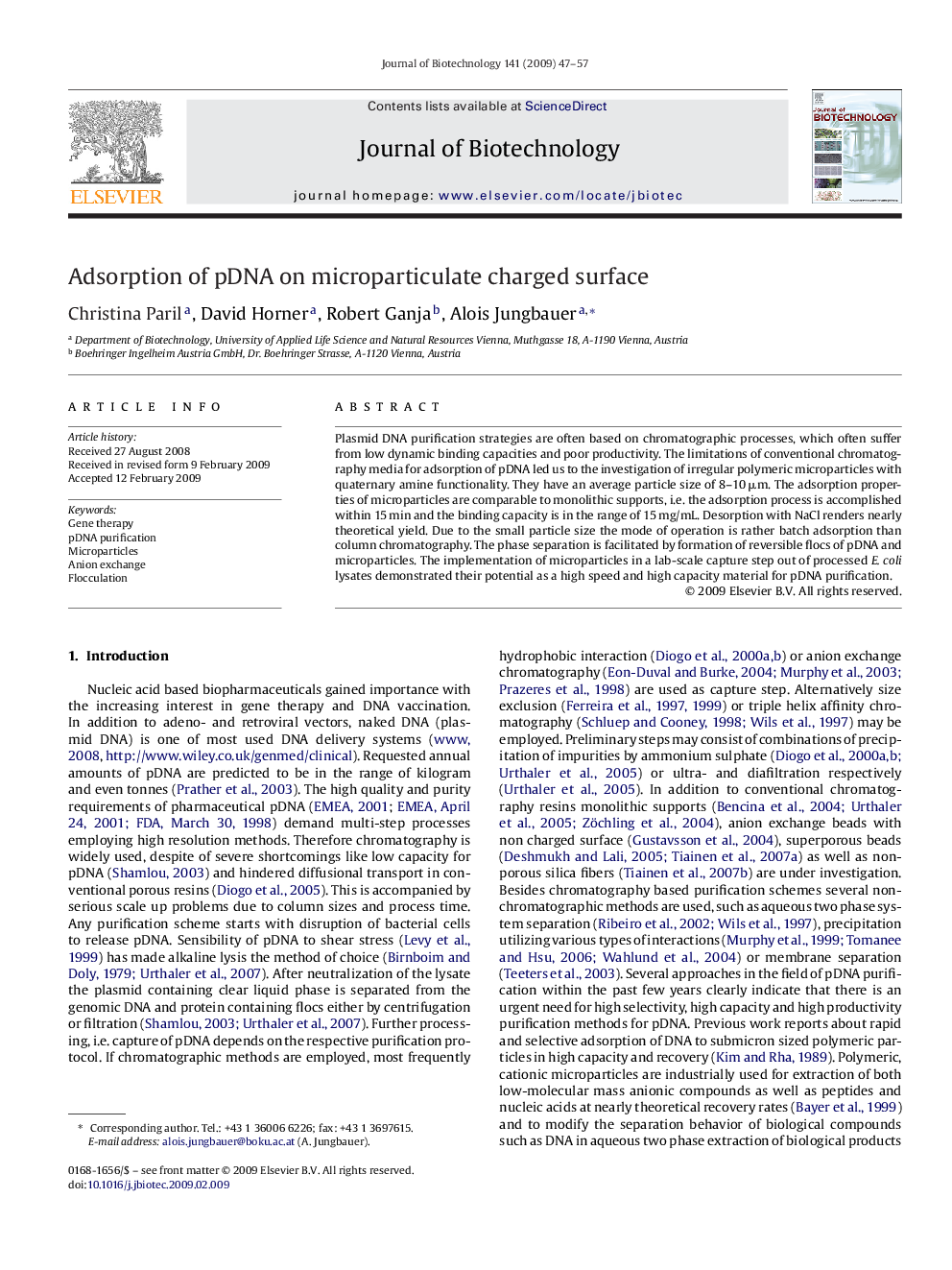| Article ID | Journal | Published Year | Pages | File Type |
|---|---|---|---|---|
| 24149 | Journal of Biotechnology | 2009 | 11 Pages |
Plasmid DNA purification strategies are often based on chromatographic processes, which often suffer from low dynamic binding capacities and poor productivity. The limitations of conventional chromatography media for adsorption of pDNA led us to the investigation of irregular polymeric microparticles with quaternary amine functionality. They have an average particle size of 8–10 μm. The adsorption properties of microparticles are comparable to monolithic supports, i.e. the adsorption process is accomplished within 15 min and the binding capacity is in the range of 15 mg/mL. Desorption with NaCl renders nearly theoretical yield. Due to the small particle size the mode of operation is rather batch adsorption than column chromatography. The phase separation is facilitated by formation of reversible flocs of pDNA and microparticles. The implementation of microparticles in a lab-scale capture step out of processed E. coli lysates demonstrated their potential as a high speed and high capacity material for pDNA purification.
